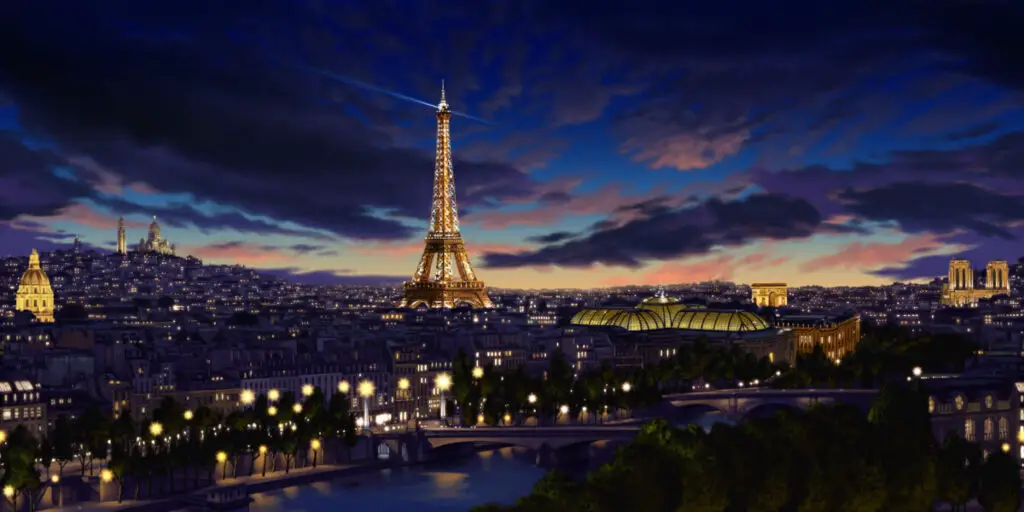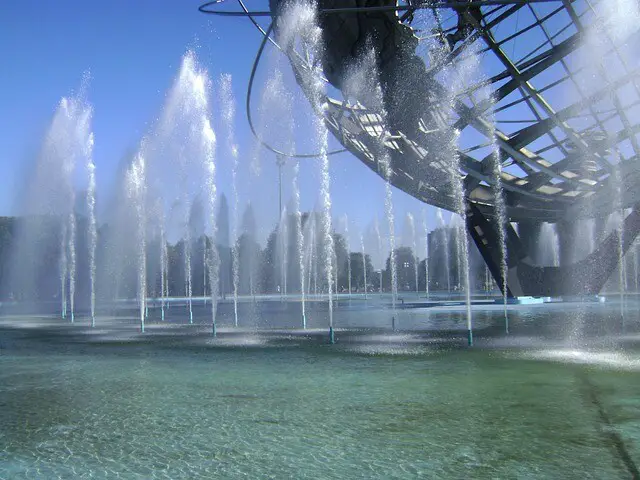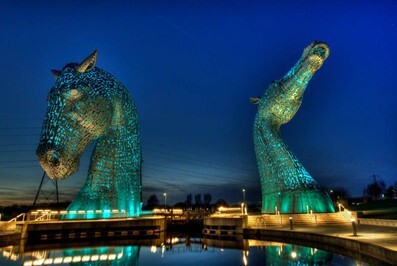|
Getting your Trinity Audio player ready...
|
Metal sculptures transform cold, hard materials into stunning art that tells a story and evokes emotion in most people.
Intricate designs and impressive craftsmanship make the best metal sculptures captivating. From the fusion of form and texture to brilliant use of various metals, great sculptural works of art showcase a unique blend of creativity and skill.
The history of metal art spans centuries, with sculptors constantly refining their techniques and pushing boundaries. Famous names, David Smith, Louise Bourgeois, and Alexander Calder have made significant contributions to sculpture.
Their works demonstrate how metal can be shaped into abstract and realistic forms, creating timeless works that have the power to inspire and amaze us.
Common metals, such as steel, copper, and bronze are often used in metal sculpture. Each material brings its own characteristics, influencing the final look and feel of a work. Talented artists can combine these materials to create depth and contrast, resulting in riveting art that captures the eye and imagination.
Famous Metal Sculptors
David Smith
David Smith (1906–1965) was an American known for large-scale welded metal sculptures. He started out as a painter before turning to sculpture, where he created intricate designs using welded metal. His works, such as Cubi Series, are celebrated for their geometric elegance.
Richard Serra
Richard Serra is renowned for his massive, minimalist sculptures made from Cor-Ten steel. The undulating Band at the Broad Museum, redefines space with its scale and form. Serra’s work features weathering steel, giving it a unique, rustic appearance.
Jon Allen
Jon Allen specialises in abstract metal sculptures. His works feature dynamic forms and vibrant colours, often displayed in galleries and outdoor spaces. Allen’s sculptures are known for their contemporary aesthetics and innovative design.
Phairote Thanomwong
Phairote is known for creating stunning scrap metal figures. His work feature intricate details and creativity, transforming discarded materials into beautiful works of art. It’s worth the shortish drive from Bangkok to Nonthaburi just to see Phairote’s amazing work. I just wish I hadn’t chosen the hottest day of the year.
Alexander Calder
Alexander Calder, famed for kinetic sculptures, also created striking metal works. Calder’s sculptures often melded movement and form, bringing his art to life in unique ways. His mobiles and stabiles are known worldwide for their innovative use of metal.
Techniques of the Best Sculptors
Renowned metal sculptors employ a range of methods to shape and finish their works. These techniques include carving, welding, and the patination finishing process. If you don’t know, seeing how it’s done will amaze you.
The Sculpting Processes
Metal sculptors often begin with carving or cutting the metal. Using saws, grinders, and plasma cutters, they shape the metal.
Carving
Carving and cutting are essential initial steps that form the basis of more complex sculptures.
Welding
Welding involves fusing metal parts together using heat. This allows for combining separate pieces into a cohesive whole. The prominent metal sculptor David Smith was a pioneer in this technique. He created intricate and robust sculptures through meticulous welding.
Forging.
Forging is heating metal until it is malleable, then hammering it into shape. It adds texture and detail that cutting and welding alone can’t achieve. Each method serves a specific purpose, contributing to the overall artistry and durability of the sculpture.
Finishing and Patination
After the sculpting is complete, finishing touches are applied.
Grinding and polishing
When smoothing out rough edges and bringing out the shine in the metal, some sculptors prefer a raw, rugged look, while others opt for a polished, reflective finish.
Patination
Patination is a technique that alters the surface colour of the metal. By applying chemicals, heat, or oxidation, sculptors create unique hues and patterns. Richard Serra’s massive steel sculptures, for example, develop a rich, rusty patina that enhances their visual appeal and depth.
Takeaway
The final steps may involve protective coatings which can prevent rust and damage, ensuring the sculpture’s longevity. Whether applying a clear lacquer or a coloured layer, the finishing process adds to both the aesthetic and functional value of the work.
Materials used in the Best Art Metal Works
Metal sculptures can be crafted from a variety of materials. Each type of metal offers unique properties and aesthetic qualities.
Steel
A popular choice, steel’s strength and flexibility make it ideal for both small sculptures and large public installations. Sculptors often use welding techniques to shape and join the steel together.
Bronze
Used in sculpture for centuries, bronze is durable and gives a smooth finish. Many sculptors favour it for its ability to capture fine details. The material gradually develops a beautiful patina, adding depth and character to the sculpture.
Copper
Another common material, copper’s rich reddish-brown colour can be very striking. The metal is malleable, allowing artists to create intricate designs. Copper sculptures can develop a green patina, giving them an antique appearance.
Aluminium
Valued for being lightweight and resistant to corrosion, aluminium is easy to cut and shape, making it a versatile option when looking to create abstract and realistic forms.
Corten steel
Known for its distinctive rust-like appearance, Corten steel’s surface rust forms a protective layer that prevents further corrosion. This characteristic makes it a popular choice for outdoor sculptures.
Iron
Iron has a long history in sculpture. It is strong and can be cast or wrought into different shapes. Iron sculptures can also take on a dramatic patina, enhancing their visual appeal.
Takeaway
These materials provide a broad range of textures, colours, and forms to express their creativity. Whether through welding, casting, or forming, each metal offers unique possibilities for stunning works of art.
Some of the Best Metal Sculpture Monuments in the World
| Monument Name | Sculptor | Creation Date | Type |
| Eiffel Tower | Gustave Eiffel | 1889 | Decorative |
| Cloud Gate | Anish Kapoor | 2006 | Abstract |
| Angel of the North | Antony Gormley | 1998 | Figurine |
| The Thinker | Auguste Rodin | 1904 | Figurine |
| Unisphere | Gilmore D. Clarke | 1964 | Geometric |
| Chicago Picasso | Pablo Picasso | 1967 | Abstract |
| The Kelpies | Andy Scott | 2013 | Figurine |
| La Grande Vitesse | Alexander Calder | 1969 | Kinetic |
| Large Figure in a Shelter | Henry Moore | 1985 | Figurine |
The Eiffel Tower

The Eiffel Tower, created by Gustave Eiffel, is one of the most well-known and recognisable structures. Completed in 1889, it is a decorative masterpiece in Paris made from wrought iron. Its size, grandeur and intricate lattice design showcases geometrical beauty.
Cloud Gate
Anish Kapoor’s Cloud Gate, also known as “The Bean,” is an abstract and reflective sculpture. Completed in 2006, it sits in Chicago’s Millennium Park and reflects the city’s skyline, engaging viewers with its smooth, mirror-like surface.
Angel of the North

Angel of the North by Antony Gormley is a figurine located in Gateshead, England. Created in 1998, this massive steel sculpture symbolises strength and grace, and has become an iconic landmark.
The Thinker

Auguste Rodin’s The Thinker is one of the most famous figurines in the art world. Cast in bronze in 1904, the sculpture depicts a contemplative figure deep in thought, showcasing Rodin’s mastery of human form and expression.
Unisphere

The Unisphere by Gilmore D. Clarke is a large, geometric sculpture located in New York City’s Flushing Meadows-Corona Park. Created in 1964, it symbolises global interdependence with its representation of the Earth.
Chicago Picasso
Pablo Picasso’s Chicago Picasso is an abstract 1967 sculpture in Daley Plaza, Chicago. Made of Cor-Ten steel, it stands as controversial yet fascinating public art, inviting interpretations from viewers.
The Kelpies

Andy Scott’s The Kelpies are two towering steel horse figurines located in Falkirk, Scotland. Completed in 2013, these sculptures honour the cultural heritage of Scottish horse-powered industries.
La Grande Vitesse
La Grande Vitesse by Alexander Calder is a kinetic sculpture in Grand Rapids, Michigan. Completed in 1969, it features dynamic, abstract forms that move and interact with the environment, embodying motion and balance.
Large Figure in a Shelter
Henry Moore’s Large Figure in a Shelter is a figurine created in 1985. It captures the artist’s fascination with the human form and shelter, combining strength and vulnerability in its imposing presence.
Final Thoughts
Metal art holds a unique place in the art world. They combine strength and beauty, transforming raw materials into stunning pieces that capture our imagination.
One of the most notable aspects of metal artwork is durability. These artworks can withstand climatic changes, making them perfect for both indoor and outdoor displays.
Interesting Facts:
- Many sculptures and statues are created through welding, which allows for intricate designs.
- Some artists use scrap metal to craft their pieces, promoting recycling and sustainability.
In terms of artistic expression, metal offers endless possibilities. Artists can experiment with different types of metal, such as bronze, steel, and aluminium, each with its own texture and colour.
Metal plays a significant role in public art. They enhance public spaces, gardens, and parks, creating focal points that draw people in. Examples include Tony Smith’s Stinger, which showcases his contribution to minimalism.
Materials Commonly Used:
Bronze is durable and rich in colour. Steel is strong and versatile, and Aluminium is light and rust resistant.
Metalworking continues to evolve, with contemporary artists pushing the boundaries of form and texture. The fusion of traditional techniques with modern technology opens new avenues for artists to explore.
Metal sculptures are more than art; they are statements of creativity, resilience, and innovation. They stand as a testament to human ingenuity, capturing both the artist’s vision and leaving the viewer in awe.
Frequently Asked Questions
Metal art requires careful maintenance and protection to ensure longevity. Different materials and processes are used to create these works of art.
How do they maintain outdoor metal sculptures?
They need regular cleaning to remove dirt and prevent corrosion. Cleaning with a soft cloth and mild soap is usually sufficient. For more stubborn grime, a mixture of water and detergent can be used. Applying a clear wax or sealant can also help protect the metal’s surface.
What materials are commonly used in crafting metal sculptures for the home?
Sculptors use bronze, stainless steel, and aluminium often. These metals are popular due to their durability and aesthetic appeal. Bronze is especially prized for its classic look, while stainless steel and aluminium offer a sleek, modern finish.
What processes are involved in the creation of large metal sculptures?
Creating large metal objects involves techniques like welding, casting, and forging. Welders join metal pieces together, while casting pours molten metal into molds to form shapes. Forging involves heating metal and shaping it using hammers or presses. Each process requires precision and skill.
Where can you buy metal sculptures?
They can be purchased from art galleries, online stores, and directly from artists’ studios. Rob Lorenson Sculpture and Art in Context provide options to explore metal art works and the artists.
How do they protect metal sculptures from the elements?
They are protected from weather damage by applying protective coatings such as clear sealants or wax. Regular maintenance and careful placement away from harsh elements like direct sunlight and heavy rain can also prolong the lifespan. Bronze develops a desirable patina over time, which can be preserved with proper care.
What are the most durable metals for outdoor sculptures?
The most durable metals for outdoor sculptures include bronze, stainless steel, and weathering steel. Bronze resists corrosion well and ages beautifully. Stainless steel is known for its high resistance to rust and corrosion, making it ideal for outdoor use. Weathering steel develops a surface rust that protects the metal underneath.
Why not Join Us
If you enjoyed this article, we would like to offer you two gifts – our Starter Pack of 4 James King’s books and our Weekly Digest, which you can receive by email.

